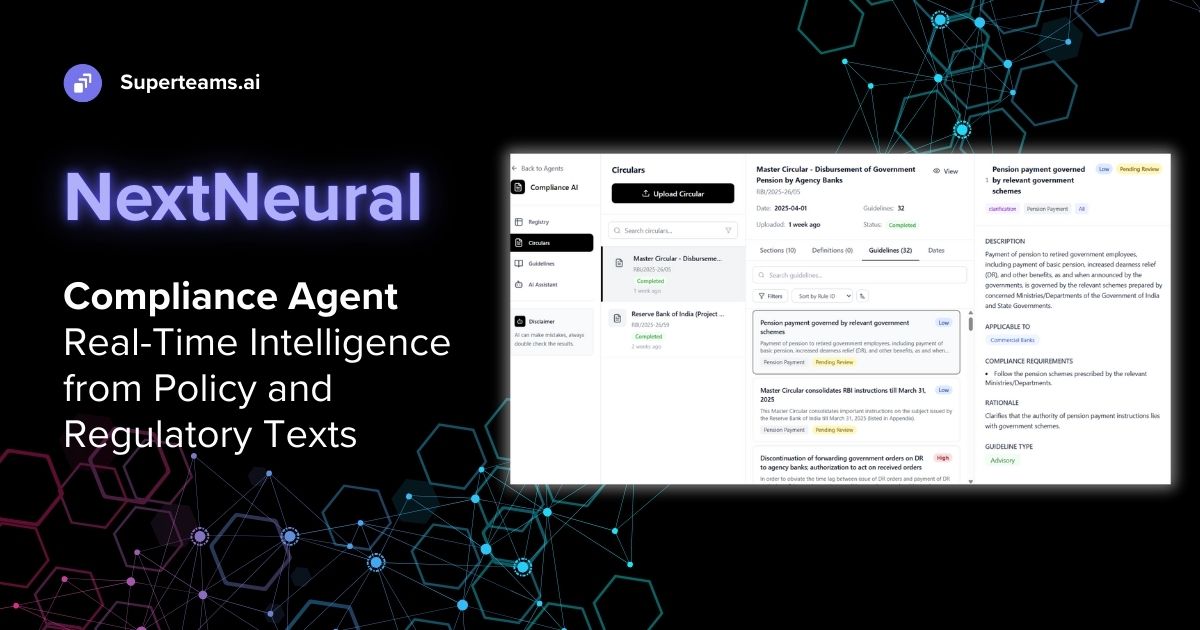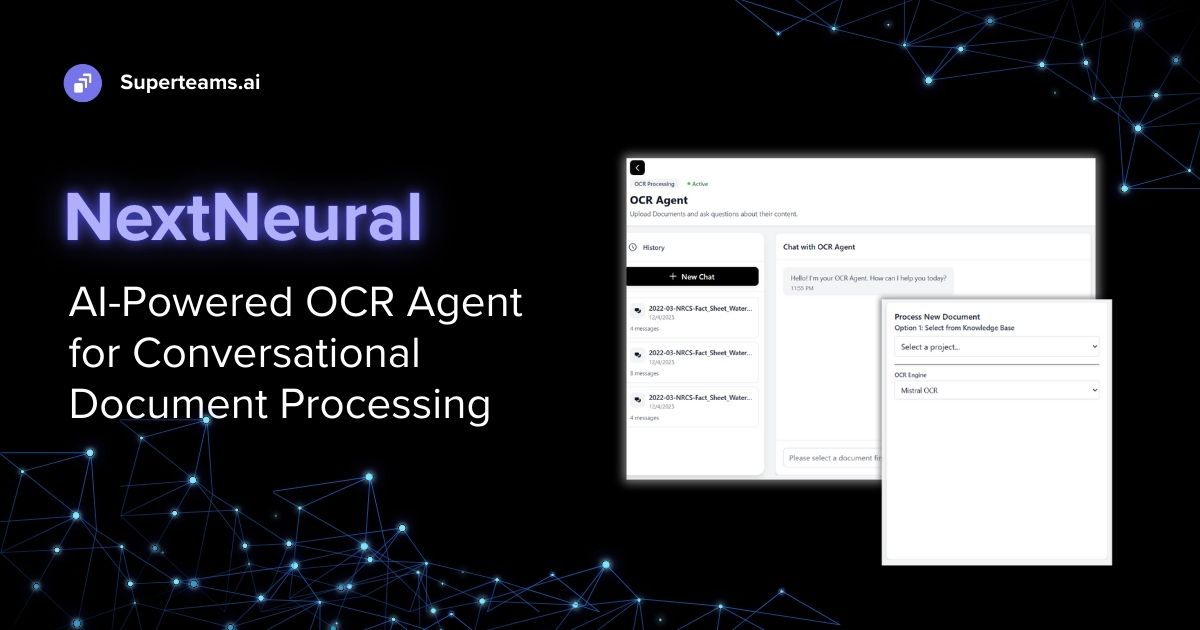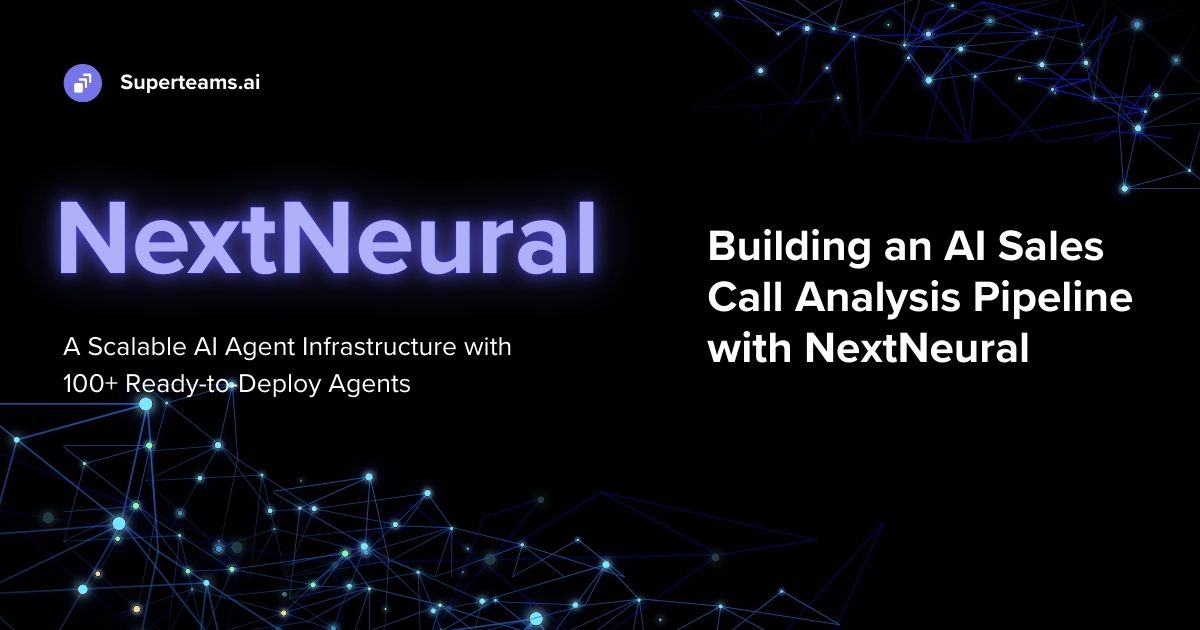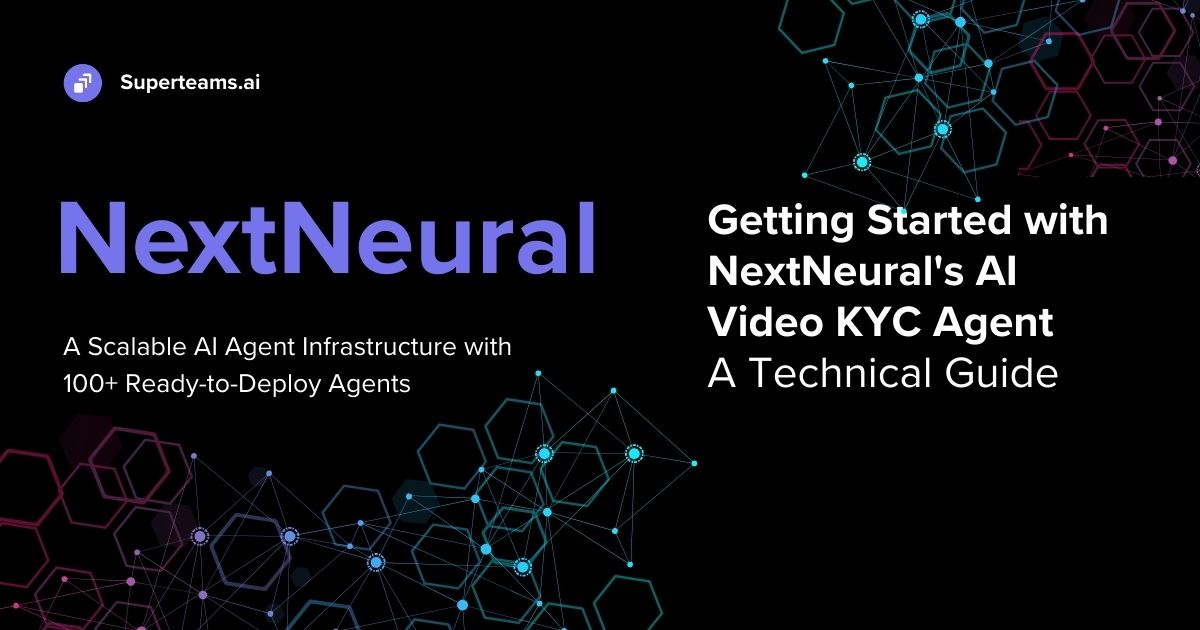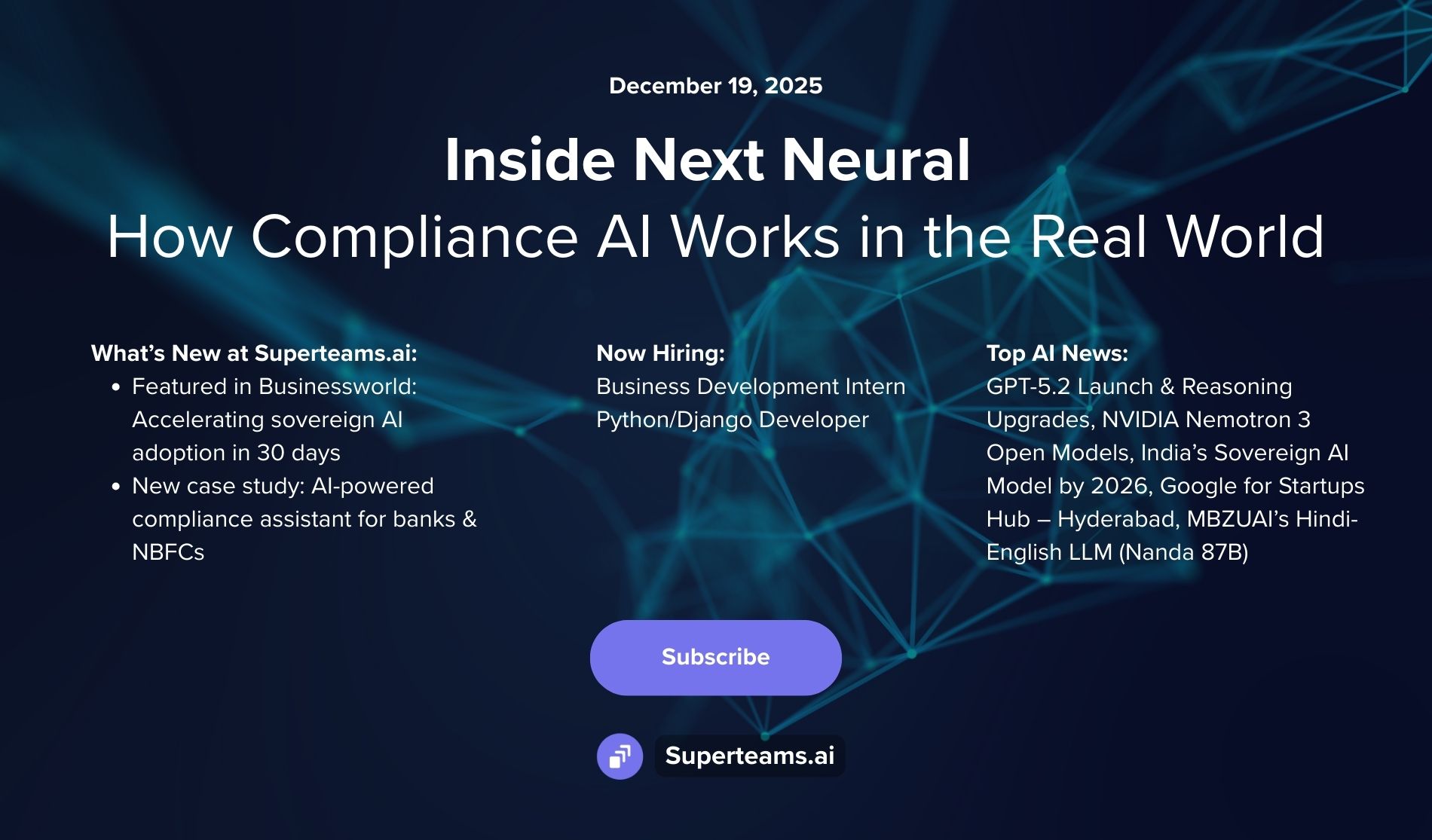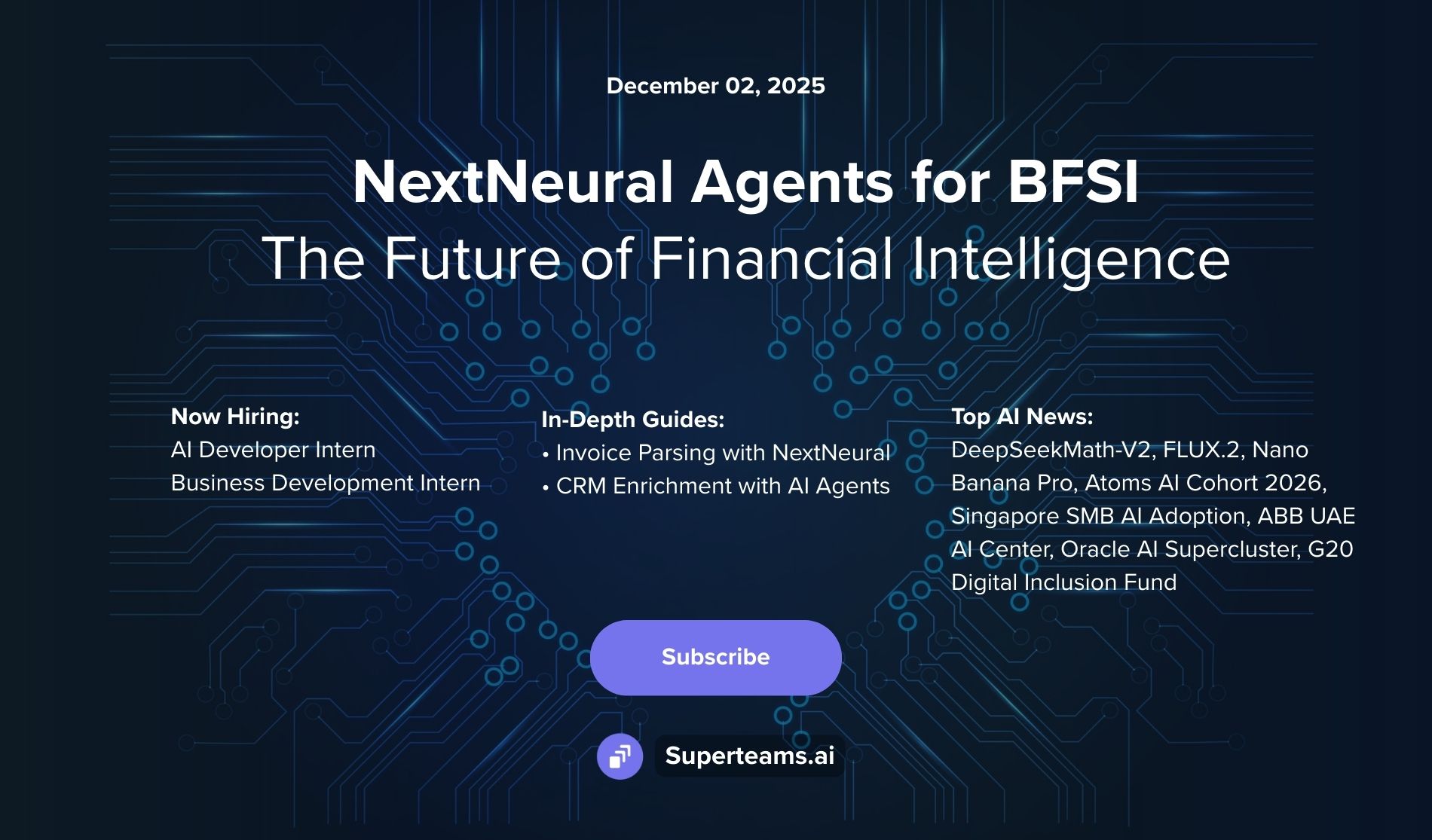What Is a Fractional AI R&D Team and How Can It Cut Product Time-to-Market by 50%?
Learn how fractional AI R&D teams can cut time-to-market by 50% and help you build smarter and leaner in 2025.
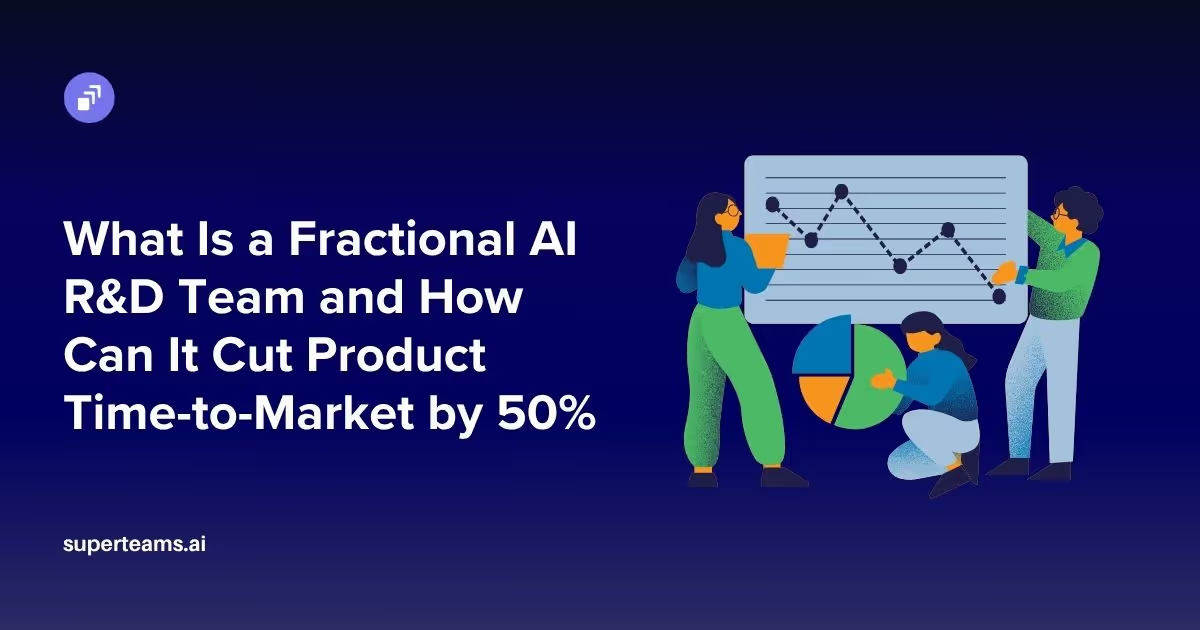
In 2025, the AI-driven economy is more competitive than ever. With AI technologies rapidly advancing, companies that swiftly bring AI products and features to market gain a significant edge. Delays can result in missed opportunities and lost market share.
Traditional R&D cycles often struggle to keep pace. They can be slow, costly, and resource-intensive, hindering innovation and responsiveness. This is where Fractional AI R&D teams come into play. By leveraging specialized expertise on a flexible basis, these teams can accelerate development processes, reduce costs, and enhance agility.
The important question is: can a Fractional AI R&D team help you launch faster, and smarter, at half the cost and time?
The answer lies in embracing this innovative approach to R&D, enabling your organization to stay ahead in the fast-paced AI landscape of 2025.
What Is a Fractional AI R&D Team?
A Fractional AI R&D Team is a flexible, modular group of AI experts brought in to accelerate specific phases of your AI product development, without the long-term costs of full-time hiring. Think of it as on-demand access to a curated brain trust of AI professionals, from system architects and ML engineers to data scientists and MLOps specialists. These teams work across the AI stack: from prototyping and model experimentation to production-grade deployment and performance tuning. You retain control of your core vision while leveraging top-tier AI talent for rapid execution.
Whether you’re launching a customer support assistant, building a recommender system for an e-commerce app, or fine-tuning a computer vision model for edge devices, a fractional team plugs in with purpose: to build fast, ship reliably, and hand off cleanly.
Structure
Fractional AI R&D teams are typically composed of a core team—usually a lead AI architect, a machine learning engineer, and a project manager—and a rotating bench of domain-specific experts. These on-demand experts are brought in based on project requirements. For example, if your product needs document intelligence, a CV-NLP specialist might be added temporarily. If the focus is personalization, a recommender systems expert joins for a sprint. This modular structure allows for maximum agility without sacrificing depth of expertise.
This approach also ensures that your build is never bottlenecked by a lack of specialized skillsets. As your scope evolves, so does your team.
Engagement Model
The engagement model is time-bound, milestone-driven, and cost-controlled. Most companies engage fractional teams for focused durations, ranging typically from 3 to 6 months, aligned with key product milestones like “MVP launch,” “beta testing,” or “LLM fine-tuning complete.” Instead of open-ended contracts or hiring cycles, you work within a defined sprint roadmap, with deliverables, deadlines, and scope outlined upfront.
This makes the model ideal for teams that need to move fast, keep budgets lean, and stay strategically flexible. You get all the benefits of a high-caliber AI team, minus the hiring delays, payroll liabilities, and long-term overhead.
Don’t hire the army; deploy the specialists.
How Fractional AI R&D Teams Work
Fractional AI R&D teams break away from the slow, siloed pace of traditional product development. Instead of building out a full internal team from scratch—often a months-long process—you get rapid access to the exact skill sets needed for each phase of your AI journey. The result? Faster ideation, quicker iteration, and a streamlined path from concept to launch.
Here’s how the two approaches compare at each stage of the AI product lifecycle:
The Superteams.ai Execution Model
At Superteams.ai, we follow a four-phase model designed for speed, flexibility, and reliability:
- Understand: We dive deep into your product goals, existing architecture, and market fit to identify the right AI approach.
- Assemble: We handpick a fractional team tailored to your needs — from LLM engineers to MLOps specialists — ensuring no skill gaps.
- Execute: We build, test, and deploy in iterative sprints, keeping you in the loop with milestone-based updates.
- Transfer or Maintain: Depending on your preference, we either hand over the system cleanly to your in-house team or continue to support, scale, and evolve your AI product.
This model lets you move fast without breaking things, or budgets. Whether you're validating an idea or pushing for a market-ready launch, fractional AI teams meet you where you are and take you where you need to go.
Why Traditional AI Hiring Slows You Down
Building an AI team the conventional way can feel like trying to race in slow motion. The global shortage of AI talent has made hiring a drawn-out and costly process: often taking 4 to 6 months to identify, interview, negotiate, and onboard just one senior AI engineer. For startups or mid-sized companies, this lag can mean missing your window to launch or falling behind faster-moving competitors.
Even after you hire, there’s the onboarding drag. New team members need time to understand your domain, data infrastructure, and internal tools. In AI projects, this ramp-up period can stretch for weeks, especially if your systems aren’t ML-ready. And the deeper the model complexity—say, you're dealing with multimodal embeddings or reinforcement learning—the longer the learning curve.
There’s also the issue of scope creep, which haunts many in-house teams. With full-time AI staff on the payroll, projects often expand unnecessarily. Teams explore additional features, add “nice-to-haves,” or re-engineer pipelines, not always because it's needed but because they can. This leads to bloated builds and pushed deadlines.
Finally, there’s the opportunity cost. Every week spent hiring or re-scoping internally is a week lost in a rapidly evolving market. In 2025, customers and investors are drawn to what’s live, not what’s in development. A delayed AI feature can mean lost media buzz, missed user growth, or a rival capturing your space.
How Fractional AI R&D Cuts Time-to-Market by 50%
Fractional AI R&D teams are built for velocity. By replacing the slow gears of traditional hiring and internal ramp-up with a high-functioning, ready-to-deploy unit, you remove friction from every phase of development, from prototype to production.
Ready-Made Expertise
There’s no onboarding, no training weeks, no guesswork. These are AI-native teams fluent in the latest tooling, from vector databases and LoRA fine-tuning to MLOps pipelines and GPU optimization. They arrive with the architecture, not just the skills. Whether you're building on top of OpenAI, Hugging Face, or your own model stack, execution begins from day one.
Focused, Milestone-Based Delivery
Fractional teams work on short, defined sprints tied to outcomes, not open-ended to-do lists. That means fewer meetings and more momentum. You’re not managing the team; you’re managing the milestones. And each milestone comes with a delivery that’s tested, versioned, and deployment-ready.
Parallel Execution, Not Linear Lag
Instead of waiting on sequential delivery from a stretched in-house team, fractional experts operate in parallel. Model engineers train and validate while infrastructure experts optimize for deployment. Data pipelines and model endpoints evolve simultaneously. This horizontal speed unlocks compounding velocity, something traditional R&D rarely achieves.
Lean Experimentation at Scale
Fractional teams thrive on A/B tests, rapid PoCs, and iterative pilots. They move fast without bureaucratic drag, launching experiments, analyzing results, and pivoting based on feedback. You test and learn in weeks, not quarters.
Halving your build time doubles your chances of owning the market.
Case Study: Launching an AI-Enabled SaaS Feature
A mid-sized Indian SaaS company serving the real estate sector wanted to level up its platform by integrating an AI-powered smart document summarization feature. The goal was to help real estate professionals quickly process contracts, listings, and regulatory documents, reducing time spent on manual review and improving decision-making speed.
The Challenge
Internal projections for hiring a full-time AI team—including a lead architect, machine learning engineer, and backend developer—came with a timeline of 5 to 6 months, factoring in recruitment, onboarding, and initial ramp-up. This delay would push the feature launch well into the next financial quarter, risking both market momentum and customer expectations.
The Fractional AI Solution
Instead of waiting, the company brought in a Fractional AI R&D Team. The lean unit included:
- 1 AI Architect (for solution design and model selection),
- 1 Data Engineer (for pipeline integration), and
- 1 AI Developer (for implementation and testing).
The MVP was delivered in just 2.5 months, with end-to-end document ingestion, semantic summarization, and user-facing integration complete by month 4—a 50% faster rollout than originally planned.
The Outcome
By launching well ahead of the competition, the SaaS firm gained a 6-month first-mover advantage in a highly competitive vertical. Clients responded positively, citing reduced cognitive load and faster turnaround on document-heavy workflows. What began as a fractional engagement became a foundational feature, accelerating the company’s roadmap and strengthening its product-market fit
When to Use a Fractional AI R&D Team
The model is best suited for companies and teams that need to move fast, test ideas, or access specialized skills without the burden of building from scratch.
An AI prototype is worth a thousand meetings.
Best-Fit Scenarios
- Rapid Prototyping of AI Features or Products
You have a great AI feature in mind—a chatbot, a classifier, a recommender—and need to validate it fast. A fractional team can build and test a working prototype in weeks, not quarters. - Overstretched Internal Teams
Your current dev team is busy keeping the lights on, and while they’re good, they’re not AI-native. Fractional experts can plug in with zero ramp-up and take the AI lift off their plate. - Early-Stage Companies with Lean Budgets
You need world-class AI talent, but not on a full-time payroll. Fractional teams let you access senior expertise without world-class burn rates.
Enterprise Innovation Labs
Large companies often get stuck in slow approval loops. Fractional AI teams allow for parallel experimentation, building PoCs and MVPs without stalling the core roadmap.
Common Concerns and How to Address Them
Despite the clear advantages, some companies hesitate to adopt the fractional model due to understandable concerns around IP, continuity, and security. These can all be addressed with a structured engagement model and the right safeguards.
IP Ownership
Clients retain 100% ownership of all deliverables, including code, models, and datasets. This is explicitly defined in service agreements and NDAs. The fractional team operates as an extension of your team, not a third-party vendor with rights.
Continuity and Knowledge Transfer
Every engagement includes thorough documentation, onboarding walkthroughs, and handoff plans. Whether you're transitioning to an in-house team or scaling further with external support, we ensure no institutional knowledge is lost.
Security and Access Controls
Fractional teams follow best-in-class security protocols, including secure VPNs, zero-trust architecture, encrypted data pipelines, and controlled access environments. You define the guardrails; we operate within them.
How Superteams.ai Builds Your Fractional AI R&D Dream Team
At Superteams.ai, we engineer high-velocity teams built for deep tech execution..
Our Process
- Problem Scoping Workshop
We start with a focused session to define your use case, success metrics, and technical constraints, whether you’re building with LLMs, computer vision, or structured data. - Talent Matching
We handpick engineers, architects, and specialists from our curated network of vetted AI talent, based on your domain, stack, and product goals. - Sprint-Based Execution
Development moves in 2–3 week sprints, with regular check-ins, demos, and deliverables. You always know what's being built and when it’s ready to ship. - Optional Handover
After MVP, we offer a clean handover to your internal team or continue with production support and iteration, depending on your stage and goals.
What Sets Us Apart
- Faster Onboarding (<2 Weeks)
No long hiring cycles: our teams are project-ready within 10–14 days. - Access to Rare AI Skillsets
From Vision AI and Predictive Modeling to Agentic AI and LLM-based retrieval systems, we bring niche talent you won’t find on traditional hiring platforms. - Dynamic Scaling
Scale your team up or down as needed. Add a MLOps expert for 2 sprints, or a fine-tuning specialist for one milestone. You pay for what you need and when you need it.
Conclusion: Build Faster, Smarter, Leaner
In the race to launch AI-powered features and products, time is no longer a luxury; it’s your most strategic asset. A Fractional AI R&D Team gives you the firepower to move fast, without compromising on quality or draining your runway. You get access to world-class talent, sprint-based execution, and the flexibility to scale, all while keeping burn predictable and outcomes measurable.


